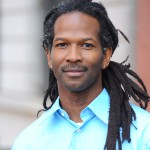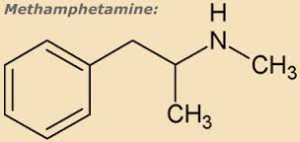I got back Saturday from a 3-week extravaganza: first the Nobel conference on Addiction, then two weeks as a visiting prof at Gustavus College, and then a week in Toronto, catching up with relatives and friends, hanging out with my daughter, and doing about one talk per day on…you know, addiction not being a disease, that sort of thing. We’ve got a lot to catch up on.
 Let’s start with the conference. The Nobel Foundation (yes, the big guys, and no, I did not get a prize — they’re often awarded posthumously so I should be grateful) has been hosting this annual event at Gustavus Adolphus College. I’d never heard of it either, but it’s a high-ranking liberal arts college near Minneapolis. This year “addiction” was the topic. So I was pleased to be invited and especially glad that I’d be meeting Carl Hart.
Let’s start with the conference. The Nobel Foundation (yes, the big guys, and no, I did not get a prize — they’re often awarded posthumously so I should be grateful) has been hosting this annual event at Gustavus Adolphus College. I’d never heard of it either, but it’s a high-ranking liberal arts college near Minneapolis. This year “addiction” was the topic. So I was pleased to be invited and especially glad that I’d be meeting Carl Hart.
 He was easily the most dashing speaker at the conference — a tallish, slim black man with long dreads, handsome, friendly, cool, and collected. His book, High Price, is one of the most popular books on addiction of the past few years. Carl’s talk came on day 2 of the conference, and the crowd of 4,000 present (and supposedly another 10,000 online) were ready for some meat. Yesterday’s talks had generally tiptoed around what many considered the main issues.
He was easily the most dashing speaker at the conference — a tallish, slim black man with long dreads, handsome, friendly, cool, and collected. His book, High Price, is one of the most popular books on addiction of the past few years. Carl’s talk came on day 2 of the conference, and the crowd of 4,000 present (and supposedly another 10,000 online) were ready for some meat. Yesterday’s talks had generally tiptoed around what many considered the main issues.
So he gets up in front of an audience of rosy-cheeked, blonde midwesterners and proclaims that 80 – 90% of recreational drug users are not addicts and never will be. And most people who use drugs don’t need jail and they don’t need medical treatment. Even the addicts — especially the addicts — are the last people one would ever want to put in prison. Massive applause. The most important thing we can do for drug users, young or old, is to educate them. Just like with sex and driving — other activities that are potentially fun and potentially harmful — users need to know how to stay safe. The crowd likes this guy, and so do I. There’s laughter and applause. It makes sense.
He provided an example of drug education specifically targeted to this audience: when you eat cannabis it takes a long time to feel the effects. So don’t keep eating brownies until you know how strong they are! More laughter, more applause, some clearing of throats from the elders. Everyone is transfixed. Hart is deliberately opening a rift between the beliefs and sensibilities of young people who are presumably experimenting with drugs and the stodgy older generation who are starting to fidget in their seats. Fascinating to watch.
 But things got a bit weird when he got onto methamphetamine. He showed some footage designed to scare people away from meth: a clip of a man writhing on the floor as though possessed by demons. He said he could not even imagine what symptoms this man was expressing — in other words, he was ridiculing the kind of “drug education” that has become status quo in the U.S. Good point. But then he went on for a long time about meth being chemically similar to Adderall, a stimulant used for ADHD. He showed slides of two molecules that looked the same except for a methyl group and apologized for speaking over the heads of the less scientifically inclined. I thought that was a cheap trick. I wasn’t convinced that Hart knew much about methyl groups to begin
But things got a bit weird when he got onto methamphetamine. He showed some footage designed to scare people away from meth: a clip of a man writhing on the floor as though possessed by demons. He said he could not even imagine what symptoms this man was expressing — in other words, he was ridiculing the kind of “drug education” that has become status quo in the U.S. Good point. But then he went on for a long time about meth being chemically similar to Adderall, a stimulant used for ADHD. He showed slides of two molecules that looked the same except for a methyl group and apologized for speaking over the heads of the less scientifically inclined. I thought that was a cheap trick. I wasn’t convinced that Hart knew much about methyl groups to begin  with. He’s a psychologist, not a chemist. In fact, methamphetamine is not the same as Adderall, which is a mixture of dextroamphetamine and levoamphetamine. Meth is far more powerful, especially given its conventional modes of ingestion, and far more addictive. So what was the message here?
with. He’s a psychologist, not a chemist. In fact, methamphetamine is not the same as Adderall, which is a mixture of dextroamphetamine and levoamphetamine. Meth is far more powerful, especially given its conventional modes of ingestion, and far more addictive. So what was the message here?
I’d read Hart’s book, cover to cover, in the month preceding the conference. What made him famous was his research program, conducted at Columbia University, showing that crack and meth addicts didn’t have to lunge for a hit of dope every time it became available, if they had other choices. He kept self-identified addicts in a residential setting for three weeks at a time, and he gave them choices between monetary (or other) rewards and various-sized hits of crack or meth. And since they didn’t get the money until they left the residence, they couldn’t go out and spend it on the street. Sure enough, meth and crack addicts often chose the money instead of the drug, especially when the money offered was at the high end of the scale and/or the dosage was at the low end. According to Hart, this demonstrated that addiction is a choice, not a disease. Addicts don’t lose their free will, as Nora Volkow might insist. They can make choices when choices are available.
I really like Hart’s argument in one respect. He is trying to show that inner-city kids who don’t have much to do except take drugs are more likely to take drugs — as a choice, not a compulsion. And I fully concur with his message about the disadvantages faced by minority members, both when it comes to choosing drugs and when it comes to the vastly disproportionate jail sentences they’re hit with — because of the built-in racial bias in laws that, for example, punish the use of crack (a “black drug”) 20 – 50 times more harshly than the use of powder cocaine (a “white drug”) despite their chemical similarity. Johann Hari gave us the same message, loud and clear. And it needs to be heard.
But I find other aspects of his message highly questionable.
First, does anyone, even Nora the Terrible, really believe that addicts cannot control their addictive impulses, even for a little while? I doubt it. That seems like a classic straw-man argument. It’s an  exaggerated claim, so it’s not that hard to rebut. Second, how much crack or meth is he offering these guys? The dosage information is in the book and related papers, but if you are offering crack or meth addicts smallish doses many times a day, day after day, surely their tolerance will soon override the potential high. Mightn’t the drug offer become just a tease? Hart doesn’t seem to care about these issues. He does not use self-report to evaluate the level of the high. And he doesn’t show how the choices might change over time (within the residency period), potentially reflecting a day-by-day build-up of tolerance.
exaggerated claim, so it’s not that hard to rebut. Second, how much crack or meth is he offering these guys? The dosage information is in the book and related papers, but if you are offering crack or meth addicts smallish doses many times a day, day after day, surely their tolerance will soon override the potential high. Mightn’t the drug offer become just a tease? Hart doesn’t seem to care about these issues. He does not use self-report to evaluate the level of the high. And he doesn’t show how the choices might change over time (within the residency period), potentially reflecting a day-by-day build-up of tolerance.
Carl Hart got the only standing ovation of any of the speakers. Hooting, whistling, on-your-feet cheering coursed around the auditorium for several minutes. Especially from the young people — the undergrads and high school students. Indeed his message was powerful, both courageous and outrageous: the middle-class, middle-of-the-road masses (young and old, expert and novice) needed to be confronted with the distortions, in fact the lies, that have been beamed at us through every conceivable media channel from the overlords of the War on Drugs.
I liked this Carl Hart. I stood up and applauded with the rest. But I wanted there to be another Carl Hart as well: one who addressed the 10 – 20%, the ones who suffer, the addicts.
When someone from the audience asked him what he would say to his kid, if the kid told him he was thinking of trying meth, Hart said he would try to educate the kid about how to stay safe, whatever drug he was taking. That’s not the answer I would have given. I would have said: smoke weed, try mushrooms, and here are some tips about doing it safely. But stay away from meth.

Leave a Reply